The Ultimate Thai Peanut Satay Sauce Recipe: Spicy, Creamy, and Totally Irresistible!
If you've ever bitten into a skewer of grilled meat drenched in a rich, nutty, and slightly spicy sauce, you already know what satay is all about. But the real star of any satay dish? That magical Thai peanut satay sauce. It’s not just for dipping—it’s a flavor bomb that can elevate everything from grilled chicken to roasted veggies. Let’s dive deep into crafting this iconic condiment with style, science, and a few sneaky pro tips!
Table of Contents
- What Exactly Is Satay (and Why Should You Care)?
- Why This Thai Peanut Satay Sauce Recipe Rocks
- Ingredients Breakdown: Spice by Spice, Spoon by Spoon
- Step-by-Step Guide: From Pantry to Party Perfection
- Pro Tips & Secret Weapons for Flavor Dominance
- Serving Suggestions & Creative Twists
- Science Meets Spice: The Chemistry of Satay Sauce
- Common Mistakes (And How to Avoid Them)
- Final Thoughts

What Exactly Is Satay (and Why Should You Care)?
Satay is more than just grilled meat on sticks—it’s a Southeast Asian street food icon. Originating from Indonesia and Malaysia before making its way to Thailand and beyond, satay typically consists of marinated meat skewered and grilled to perfection, served with a side of that dreamy peanut sauce we're here to talk about.
In Thailand, satay takes on a uniquely creamy, slightly sweet, and mildly spicy profile—thanks to the perfect balance of peanuts, coconut milk, and aromatic spices. Whether it's a late-night snack or part of a festive spread, satay sauce is the ultimate crowd pleaser.
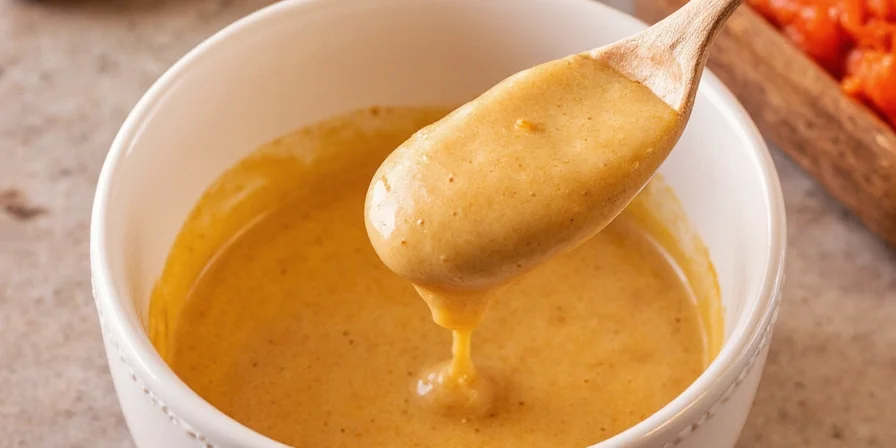
Why This Thai Peanut Satay Sauce Recipe Rocks
- ✅ Creamy texture without resorting to gloopy shortcuts
- 🔥 Balanced heat with layers of flavor, not just straight-up spice
- 🥜 Authentic peanut base, made with natural ingredients, not preservatives
- 🥄 Adaptable: vegan, low-fat, or keto-friendly options included
- ⏱️ Ready in under 30 minutes—perfect for weeknight dinners or last-minute guests
Ingredients Breakdown: Spice by Spice, Spoon by Spoon
To truly appreciate this sauce, let’s take a moment to geek out on each ingredient:
| Ingredient | Purpose | Substitution Option |
|---|---|---|
| Smooth peanut butter | Base of the sauce; provides richness and nuttiness | Crunchy PB works too—but stir well to avoid lumps |
| Coconut milk | Adds creaminess and balances heat | Heavy cream or soy milk for non-coconut lovers |
| Fish sauce | Umami bomb! Enhances depth and saltiness | Soy sauce + dash of miso paste for vegetarian version |
| Tamarind paste | Sour note that keeps the sauce from being cloying | Lime juice + a pinch of brown sugar |
| Palm sugar | Softens heat and rounds out the flavor profile | Brown sugar or honey |
| Garlic & ginger | Aromatic backbone of many Thai dishes | Freshly minced is best—don’t skip this step! |
| Red curry paste | Kicks up the heat and adds color & complexity | Adjust to taste; use mild if preferred |
| Water | Thins out the sauce to ideal dipping consistency | Broth for added depth |
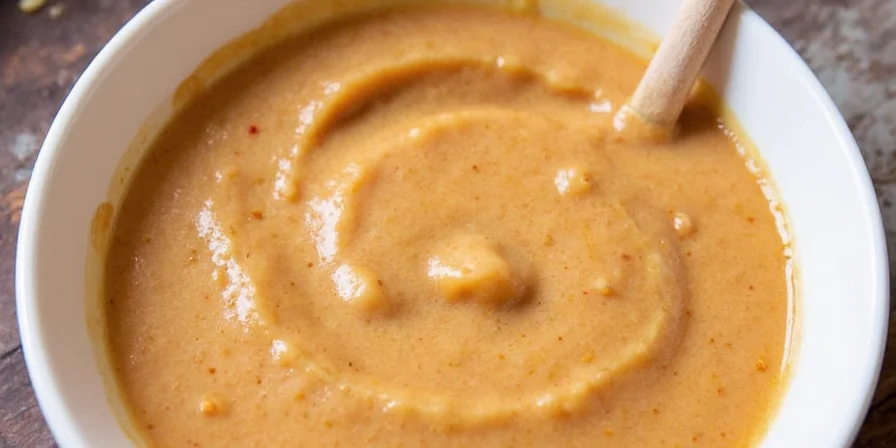
Step-by-Step Guide: From Pantry to Party Perfection
- Toast your aromatics: In a small saucepan, gently sauté minced garlic and grated ginger until fragrant but not browned. Add red curry paste and cook for another minute to bloom the spices.
- Build the base: Stir in peanut butter, coconut milk, fish sauce, tamarind paste, and palm sugar. Cook over medium-low heat, stirring constantly to prevent burning.
- Simmer for soul: Let the sauce simmer gently for 10–15 minutes. This develops the flavors and allows the oils to emulsify beautifully.
- Adjust and thin: If the sauce is too thick, add water or broth a tablespoon at a time. Taste and tweak—more heat? More sweetness? Go for it!
- Strain (optional): For ultra-smooth results, pass the sauce through a fine mesh strainer. Skip this if you like a rustic texture.

Pro Tips & Secret Weapons for Flavor Dominance
- Add toasted peanuts: Crushed peanuts sprinkled on top add crunch and authenticity.
- Infuse with lemongrass: Simmer a stalk or two while cooking the sauce for an extra layer of Thai aroma.
- Balance is key: Always taste before serving—adjust salt, acid, heat, and sweetness as needed.
- Make ahead magic: Satay sauce tastes even better the next day. Refrigerate and reheat gently before serving.
- Use fresh chilies: For those who like it really hot, blend in fresh bird’s eye chilies instead of relying solely on curry paste.
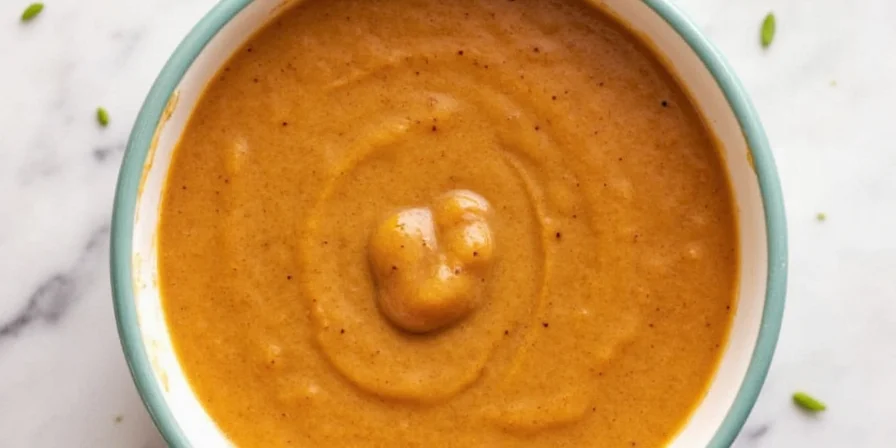
Serving Suggestions & Creative Twists
- Classic satay: Serve with grilled chicken, beef, or tofu skewers
- Dip station: Great with spring rolls, dumplings, or crispy tofu bites
- Drizzle it: Pour over rice bowls, noodles, or even roasted sweet potatoes
- Spice it up: Mix in chopped jalapeños or sriracha for an extra kick
- Global fusion: Use as a base for wraps, burgers, or even pizza sauce!
Science Meets Spice: The Chemistry of Satay Sauce
Ever wonder why satay sauce feels so comforting yet complex? It’s all in the chemistry:
- Maillard reaction: Toasting garlic and ginger enhances their savory notes via this famous browning process.
- Emulsification: Combining oil-based peanut butter and watery coconut milk creates a stable sauce when heated slowly and stirred constantly.
- Acid balance: Tamarind introduces tartness, which cuts through the richness—this contrast wakes up your taste buds.
- Umami layering: Fish sauce brings glutamates, boosting overall savoriness.
- Starch interaction: Palm sugar helps thicken the sauce slightly and softens the impact of spice molecules like capsaicin.
Common Mistakes (And How to Avoid Them)
| Mistake | Why It Happens | How to Fix It |
|---|---|---|
| Sauce separates | Too much heat or adding ingredients too fast | Keep heat low, temper additions, stir often |
| Tastes flat | Missing one of the five basic tastes | Add lime juice, salt, sugar, chili, or herbs |
| Too thick | Not enough liquid or over-reduction | Thin with water, broth, or coconut milk |
| Burnt flavor | Overheated peanut butter or not stirred enough | Simmer gently and stir constantly |
| No depth | Skipped aromatics or under-seasoning | Sauté garlic and ginger first, season gradually |
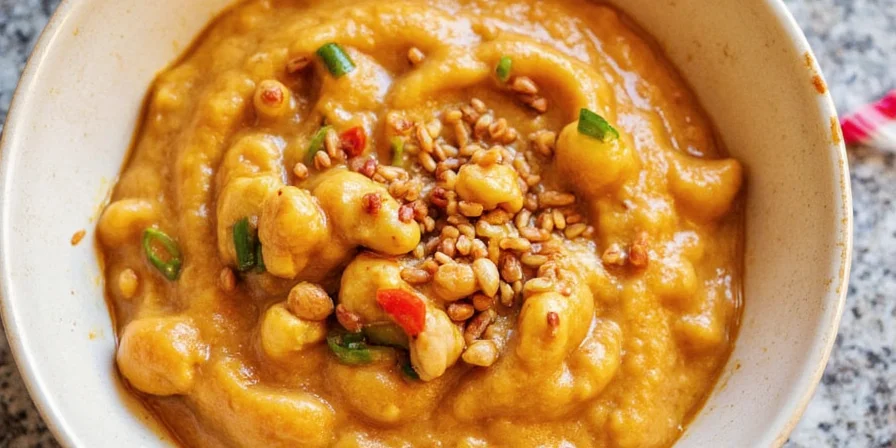
Conclusion: Satay Sauce – A Symphony of Spice, Science, and Soul
Mastering Thai peanut satay sauce isn't just about following a recipe—it's about understanding how flavors work together, respecting ingredients, and having fun along the way. With this guide, you’re armed with both the technical know-how and creative freedom to make it your own.
Whether you're hosting friends, spicing up meal prep, or just craving something bold and delicious, this satay sauce will become a staple in your kitchen. Now go forth, grill boldly, dip generously, and impress endlessly.
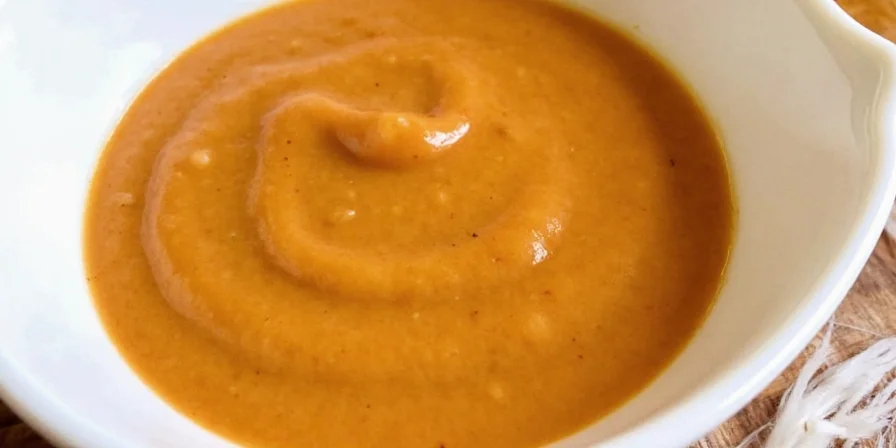
Got Questions? Want More Recipes?
Drop your thoughts below or follow us for more spice-filled adventures around the globe!











 浙公网安备
33010002000092号
浙公网安备
33010002000092号 浙B2-20120091-4
浙B2-20120091-4